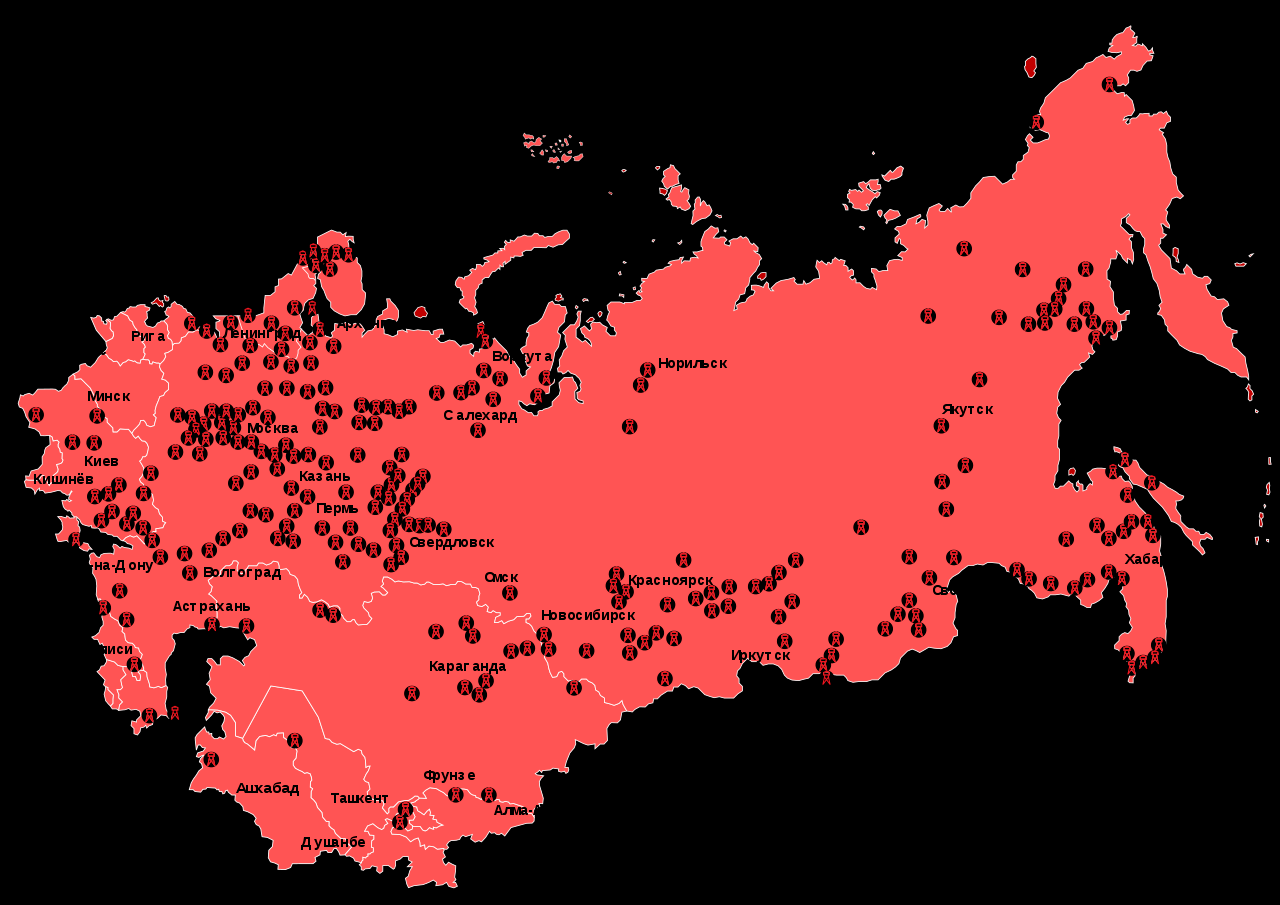Gulag was just the acronym given to what we’d call the ministry of prisons. In the US that’s the Bureau of Prisons. I googled “Department of corrections” and it redirected me to that so I can only assume the “DoC” is either a Hollywood invention, or a state department – the bureau is federal.
The “camps” themselves were created under the Tsar, and most of them were around the Moscow area – highly logical, since most of the population was in Moscow.

(A map from an anticommunist NGO who tries to prove gulags were terrible, inhumane place. They spent “years” mapping them and this is the result)
It was really just a prison, albeit with forced labour. Well, I’m not entirely how forced it was actually. Before WW2, prisoners who fulfilled their quota received extra rations or some other incentive. After WW2, with industrialisation going on, prisoners were paid for their labour and those who exceeded their quotas or behaved well received an extra wage.
With the declassification of the USSR archives, J. Arch Getty (a liberal historian, if libs give you trouble for using tankie sources) saw that most prisoners were released after serving their sensible sentences (like anywhere else), there were times where they were pardoned, and most importantly most if not all of them were actual criminals, not “political prisoners”. You can easily google him if you want to look it up yourself.
I read in another book that the USSR boasted a ~50% reinsertion rate (that means after getting out you don’t commit another crime for at least X years), whereas liberal democracies today achieve a cool 20-25%. So it seems this approach of “curing” crime through labour works. However I’m not sure what the book is trying to say (it’s partly available on google books though if you look for it). The USSR wanted to take a revolutionary, marxist approach in their endeavours and while it hasn’t been explicitly confirmed (at least from what I found), I have no reason to believe they wouldn’t also use that approach towards criminal reinsertion. The idea that you worked on projects that would benefit the public was their way of de-alienating criminals and reinsert them into society.
Edit: I think it’s also important to correct the Hollywood depiction of gulags (for example if you’ve played the Tomb Raider reboot, the second one I think, Lara goes through a gulag in shambles in a cold snowstorm, and they try to make it look like a depressing, primitive place). Most of Russia is really cold in general. Temperatures average 0C throughout the year, with summer included. The hottest parts of the USSR were around the western border, extending in an arc towards Azerbaijan and Kazakhstan. So really you had nowhere to put your prisons, except in the cold. This depiction of a harsh environment that was meant to break people and isolate them from society does not take into account Russia’s climate. People live in Siberia, and they have been for thousands of years. Why then should Russia not build facilities on her land?
Also relevant is the graph comparing gulag inmate mortality rate in Tsarist Russia to that of Soviet Russia.
Can you show the graph? I haven’t seen it yet.
The only two things that need to be said (which I’ll sum down to instead of paragraphs of explanation because @CriticalResist8@lemmygrad.ml already answered) are;
-
1: “gulag” is used in English as a propagandist term, it just means Prison. They’re prisons, nothing more.
-
2: labour camps were popular at the turn of the century, every country had them. The United States’s labour camps were some of the most brutal, and even today after legislation made labour camps functionally a thing of the past, the US still runs them, and they’re still some of the most brutal.
-




